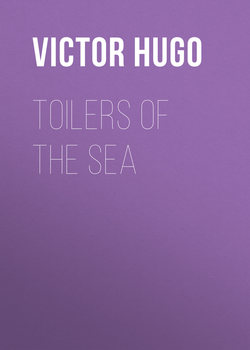Читать книгу Toilers of the Sea - Victor Hugo, Clara Inés Bravo Villarreal - Страница 33
PART I. – SIEUR CLUBIN
BOOK IV
THE BAGPIPE
VI
THE SLOOP "CASHMERE" SAVES A SHIPWRECKED CREW
ОглавлениеThe equinoctial gales begin early in the Channel. The sea there is narrow, and the winds disturb it easily. The westerly gales begin from the month of February, and the waves are beaten about from every quarter. Navigation becomes an anxious matter. The people on the coasts look to the signal-post, and begin to watch for vessels in distress. The sea is then like a cut-throat in ambush for his victim. An invisible trumpet sounds the alarm of war with the elements, furious blasts spring up from the horizon, and a terrible wind soon begins to blow. The dark night whistles and howls. In the depth of the clouds the black tempest distends its cheeks, and the storm arises.
The wind is one danger; the fogs are another.
Fogs have from all time been the terror of mariners. In certain fogs microscopic prisms of ice are found in suspension, to which Mariotte attributes halos, mock suns, and paraselenes. Storm-fogs are of a composite character; various gases of unequal specific gravity combine with the vapour of water, and arrange themselves, layer over layer, in an order which divides the dense mist into zones. Below ranges the iodine; above the iodine is the sulphur; above the sulphur the brome; above the brome the phosphorus. This, in a certain manner, and making allowance for electric and magnetic tension, explains several phenomena, as the St. Elmo's Fire of Columbus and Magellan, the flying stars moving about the ships, of which Seneca speaks; the two flames, Castor and Pollux, mentioned by Plutarch; the Roman legion, whose spears appeared to Cæsar to take fire; the peak of the Chateau of Duino in Friuli which the sentinel made to sparkle by touching it with his lance; and perhaps even those fulgurations from the earth which the ancients called Satan's terrestrial lightnings. At the equator, an immense mist seems permanently to encircle the globe. It is known as the cloud-ring. The function of the cloud-ring is to temper the heat of the tropics, as that of the Gulf-stream is to mitigate the coldness of the Pole. Under the cloud-ring fogs are fatal. These are what are called horse latitudes. It was here that navigators of bygone ages were accustomed to cast their horses into the sea to lighten the ship in stormy weather, and to economise the fresh water when becalmed. Columbus said, "Nube abaxo ex muerte," death lurks in the low cloud. The Etruscans, who bear the same relation to meteorology which the Chaldeans did to astronomy, had two high priests – the high priest of the thunder, and the high priest of the clouds. The "fulgurators" observed the lightning, and the weather sages watched the mists. The college of Priest-Augurs was consulted by the Syrians, the Phœnicians, the Pelasgi, and all the primitive navigators of the ancient Mare Internum. The origin of tempests was, from that time forward, partially understood. It is intimately connected with the generation of fogs, and is, properly speaking, the same phenomenon. There exist upon the ocean three regions of fogs, one equatorial and two polar. The mariners give them but one name, the pitch-pot.
In all latitudes, and particularly in the Channel, the equinoctial fogs are dangerous. They shed a sudden darkness over the sea. One of the perils of fogs, even when not very dense, arises from their preventing the mariners perceiving the change of the bed of the sea by the variations of the colour of the water. The result is a dangerous concealment of the approach of sands and breakers. The vessel steers towards the shoals without receiving any warning. Frequently the fogs leave a ship no resource except to lie-to, or to cast anchor. There are as many shipwrecks from the fogs as from the winds.
After a very violent squall succeeding one of these foggy days, the mail-boat Cashmere arrived safely from England. It entered at St. Peter's Port as the first gleam of day appeared upon the sea, and at the very moment when the cannon of Castle Cornet announced the break of day. The sky had cleared: the sloop Cashmere was anxiously expected, as she was to bring the new rector of St. Sampson.
A little after the arrival of the sloop, a rumour ran through the town that she had been hailed during the night at sea by a long-boat containing a shipwrecked crew.
